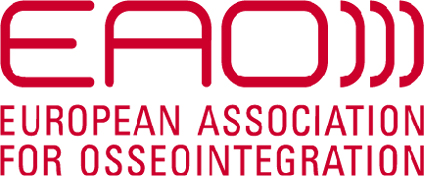Risks and complications
Risks for digital work-flow
The trend towards digital workflows in implant dentistry is gaining momentum. This evolution is driven by the desire for simpler, faster, more predictable and more precise treatment methods. But we must dispel the misconception that ‘digital’ is synonymous with ‘infallible’. Errors are still a very real possibility in digital workflows, and there are a number of diverse risks which we should be aware of.
“The trend towards digital workflows in implant dentistry is gaining momentum”
Although errors can arise from every phase of the digital workflow, the speaker focused only on the surgical applications of digital workflows and their associated risks (Figure 1).
“The speaker focused on the surgical applications of digital workflows and their associated risks”
During the ‘data acquisition’ phase, there are three main sources where potential errors might arise: patient movements, metal artefacts or incorrect position of the radiological template. When merging bone data with the information about the final position of the abutments, particular attention should be given to the accuracy of the protocol used and to any software warnings.
When manufacturing the surgical guide, a range of diverse techniques and materials may be used. Significant differences in the precision of these techniques and other associated variables have been observed, but unfortunately there are still no quality standards which have been widely accepted. More research to compare the materials and production techniques of surgical guides is required.
“More research to compare the materials and production techniques of surgical guides is required”
The speaker emphasised that the fit of the guide should always be checked in the patient before treatment, to avoid possible undercuts, check the practicality of the sleeves, and adjust for mouth opening and any changes which might have occurred since the scan was done.
“Before treatment, the surgical guide should always be checked in the patient”
The literature demonstrates that with guided surgery, some deviations between the planned and final implant positions should be expected. We know that:
- tooth-supported guides are the most accurate, compared with bone-supported or mucosal-supported guides
- in free-end cases, some bending of the template will lead to more deviation between the planned and final position; so the less distal implant’s position is, the more accurate the outcome
- as a general rule, when using mucosa-supported guides, the practitioner should allow for a mean 5º angular deviation, which can be minimised by adding fixation pins
Cases involving fully edentulous patients are the most difficult in terms of precisely placing surgical guides and transferring the planned positions of the implants. Several studies using micro-screws have shown improved results (Tahmaseb et al. 2009; Widmann et al. 2010; Mai et al. 2018) (Figure 2). A recent study reported a mean angular deviation of 4.8º and, most importantly, a maximum deviation of almost 15º (Schnutenhaus et al. 2018).
It has been shown that deviations can be reduced from 5º to 2º (± 0.9) (Lee et al. 2016) by using the sleeves close to the bone, with sharp drills and trying to to drill in a centric fashion in order to prevent the deflection of the drill.
A limited mouth opening could also pose a problem, and this should be checked in the patient beforehand. It can be noted that open sleeves require less height. The speaker emphasised that overheating should be prevented by avoiding forceful drilling and ensuring proper cooling.
“Overheating should be prevented by avoiding forceful drilling and ensuring proper cooling”
The intrinsic tolerance of the surgical guide when drilling eccentrically has been investigated in vitro (Van Assche & Quirynen. 2010; Koop et al. 2012). The conclusions were:
- the guide allows an angular deviation of up to 5.2º
- apical deviations are greater than coronal deviations
- deviations increase with depth
- the closer the sleeve is to bone, the less deviation is observed
- higher key holders are associated with less drill deviation
Placing the implants through the sleeves (fully guided) can result in less deviation compared with placing implants free-hand after having drilled with the guide (partially guided) (Bencharit et al. 2018; Younes et al. 2018).
The speaker also cautioned that the guides should be designed with enough space for a flap in order to minimise the amount of keratinised tissue lost by punching (when this approach is indicated).
Another issue which the speaker highlighted is primary stability. It is harder to feel the bone resistance through the guide, and some implants could be loose (‘spinners’). The only way to prevent this is to follow the drilling protocol recommended for soft bone (when indicated) and stop when the implant driver is in place, so as not to turn the implant any more without advancing it.
“Another issue which the speaker highlighted is primary stability”
In summary, a sound understanding of the potential deviations from planned to final implant positions associated with a digital workflow is necessary. An individual risk analysis should always be performed, and a precise and careful treatment approach is the best option for preventing problems and minimising risk.
[[slide-container]]



